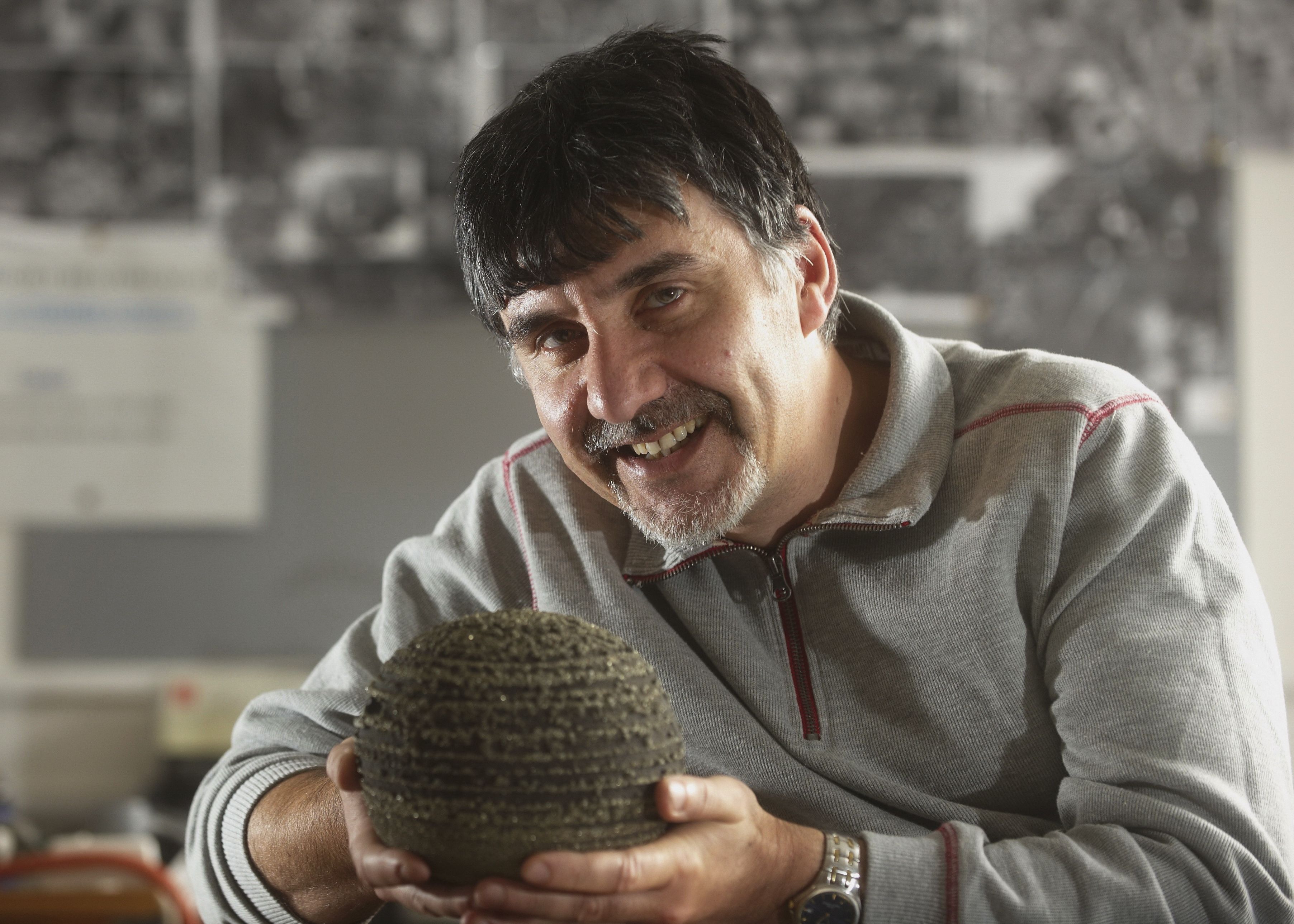2015

Vadim (Dima)
Kamenetsky is a 'New Star' Professor in Earth Sciences in the University
of Tasmania (Australia). He received his BSc (Hons) from the Moscow
State University in 1983, and PhD from the Vernadsky Institute of
Geochemistry and Analytical Chemistry, Moscow (supervised by Prof A.V.
Sobolev) in 1991. He was an ARC Australian Research Fellow (1999-2003)
and ARC Professorial Research Fellow (2005-2009). In 2003 the Alexander
von Humboldt Foundation (Germany) awarded Dima the prestigious Friedrich
Wilhelm Bessel Research Award, and he was a Visiting Professor in the
Max Planck Institute für Chemie (Mainz, Germany) in 2003-2004 and the
University of Bonn in 2012. The Faculty of Science, Engineering &
Technology, University of Tasmania awarded him the Dean's Research
Excellence Award in 2000 and 2008 and Vice-Chancellor’s Award for
Outstanding Contributions to Internationally Recognised Research in
2012. He was a finalist of the Tasmanian Science Excellence Award
competition in 2013.
Prof Kamenetsky has wide expertise in melt and fluid inclusion
experimental and analytical studies, as well as in the interpretation of
conventional petrological and geochemical data. Dima has become
internationally recognised for his research and publications on the
petrology and geochemistry of mantle-derived, primitive magmas in
different geodynamic settings, application of melt inclusion studies to
altered rocks from ophiolites, ancient volcanic belts and volcanogenic
sediments, and origin and evolution of metal-bearing fluid phases during
crystallisation of primitive to felsic magmas. The main theme of his
research is immiscibility in common magmas and fluids.
He is the author of more than 150 papers in peer-reviewed international
journals that attracted to date about 4300 citations and h-index =
36.His research has resulted in:
• First application of in-situ LA-ICPMS analysis of trace elements in
melt and fluid inclusions;
• First application of experimental melt inclusion studies to spinel
group minerals from volcanic and sedimentary rocks accepted for the ARC
funding of the Australian Research Fellowship and Grant (Novel
applications of melt inclusion studies: Insights into the magmatic
history of porphyry Cu-Au deposits and provenance of volcaniclastic
sediments) in 1999-2003;
• New discrimination method to distinguish between tectonic settings of
basaltic magmatism using chemistry of magmatic spinel and spinel-hosted
melt inclusions;
• Discovery of immiscible metal-rich fluids and "salt" melts associated
with evolving basaltic to felsic magmas in a number of effusive and
intrusive complexes accepted for the ARC funding of the Australian
Professorial Fellowship and Discovery Grant (Unmixing in magmas: Melt
and fluid Inclusion constraints on identity, timing, and evolution of
immiscible fluids, salt and sulphide melts) in 2005-2009;
• First application of experimental melt inclusion studies to
Precambrian rocks;
• Discovery of primary mantle-derived melts in a variety of geodynamic
settings, including mid-ocean ridges, back-arc basins, island arcs,
ocean islands and continents;
• First direct evidence for remnants of Precambrian continental (Gondwanan)
lithosphere in the mantle source of the Mid-Atlantic Ridge basalts and
occurrence of Pt-Pd-Au bearing Fe-Ni magmatic sulfide liquids in the
melts derived from such source;
• First interpretation of kimberlite parental meltsworldwide as
essentially non-silicate, 'dry' carbonate-chloride melts and assessment
of their potential to entrap diamond-bearing xenoliths and rapidly carry
them to the surface;
• Discovery of residual silica-gels at the point of solidification of
magmas forming mineralised porphyries and evaluation of their role in
forming quartz and concentrating economic elements.
• New interpretation of the origin and evolution of the supergiant
Olympic Dam U-Cu-Au-Ag deposit.